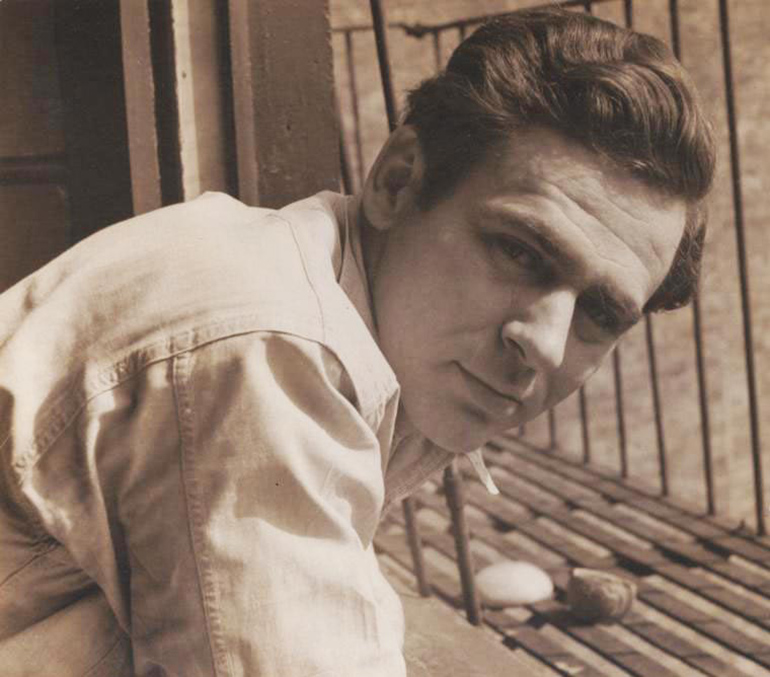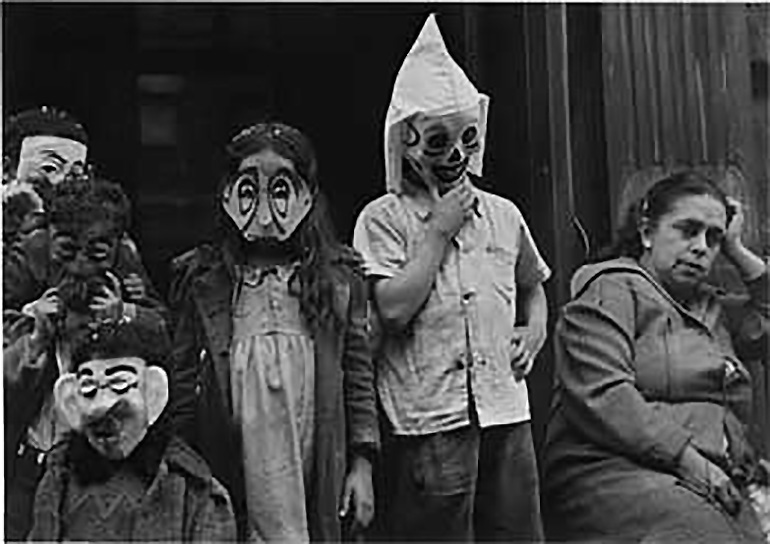THE KIND LIAR. SOME ISSUES AROUND FILM CRITICISM BASED ON THE CASE FARBER/AGEE/SCHAFER
Murielle Joudet
 FORWARD
FORWARD
 DOWNLOAD
DOWNLOAD
 ABSTRACT / KEYWORDS / ARTICLE / BIBLIOGRAPHY / ABOUT THE AUTHOR
ABSTRACT / KEYWORDS / ARTICLE / BIBLIOGRAPHY / ABOUT THE AUTHOR

Four years after the demise of James Agee, Manny Farber published a strange praise titled Nearer My Agee to Thee (FARBER, 2004: 111-115), a text overloaded with enthusiasm and emphasis towards a critic described as an unorthodox sophist who ‘spotlighted a particularly mellifluous soft-shoe type’ (FARBER, 2004: 111). A paradoxical praise, but praise, in any case, especially if we look the question closer, or let’s say rather, closer to Agee: Writer rather than journalist, charlatan rather than humble servant of the truth, great orator deranged with his own enthusiasm rather than a taste expert. The satisfaction with which Farber traces the portrait of Agee as “intriguing”, is a result of the same provoking energy with which he opposes his enemies, the ‘paralysing post-sociologists who hit the jackpot during the 1940’s’ (FARBER, 2004: 111). What Farber does, after all, is the inventory of what remains of a good critic after time has passed. The films are erased before the writing, and they will no longer be what Agee leaned on, as if they were a wall in which the climbing plants of his writing grew. The plants keep on climbing until they make the wall completely disappear. When the moment arrives, it might even be the walls that are held up by the plants, in the same way as the movies might be the ones which, eventually, end up supported by the critiques.
While reading Farber’s text, one could ask oneself, which kind of praise could be conceded to film criticism nowadays: we might be missing an Agee, capable of writing in a journal without addressing a reader for this reason; without thinking about him for even a second. One with such lack of modesty that keeps their reader completely unconsidered, it could be said, though, this expression may only be a way of defining what a critic should be: A person who defends against all odds their idiosyncrasy, their own politics, one who can be both ungrateful and excessively generous, according to both their spirit and that of cinema, who conveys their mood at the same time as the film they are reviewing. I could not point out when we began condemning ourselves to the reading of half-transparent-half-erudite style critiques, written with the humbleness of an exegete who barely tastes the films to later spit them out, as if it were wine tasting. An excess of fidelity towards the reader, towards the movies and towards certain good taste, keeps us apart from what Farber refers while describing Agee, who seemed to think that movies were at his service, and not the other way around: movies were nourishment, and therefore, it was a question of survival.
I know I can recognize a great critic while I read him because he restores, simultaneously, the essence of the movie and the essence of his time, and as if it were not enough, he also traces a raw self-portrait: deep in his text, his face appears. The hand sliding over the page could almost be heard, or the fingers pounding the keyboard, or the creak of the wooden desk… And, though his text is yelling, a concerted silence spreads around him. Thus, on each text, three different thumbprints can be recognized molten in one: film-time-critic. I remember Serge Daney’s attacks against Spielberg’s films. No matter how much I love them both, I simply consider they are two friends who should never have met, and that Daney’s texts, after all, say something about Spielberg. It is the same that Farber points out when he remembers W.H Auden’s ‘rave about Agee in a Nation fan letter included the proud ‘I do not care for movies an I rarely see them’’ (FARBER, 2004: 112). Exactly as if he tried to talk about a writer, Farber talks like this about the ‘cold shower of visual needles’ (FARBER, 2004: 113) that Agee was capable of arising, being this expression a visual needle itself.
Other elements: bad faith and enthusiasm. Enthusiasm, which would only be the reverse of a certain healthy ‘contempt’ for the film. Enthusiasm of the good critic who needs to exaggerate in order to reveal the ideas concerned on the film, as if it was necessary to boil it to make it translucent. It does not matter if, in some cases, this emotion borders over-interpretation; the love for a film, as any kind of love, implies certain delirium for its object, a faithful delirium. Farber, in effect, talks about ‘reasonable exaggerations, beautifully articulated, about dull plodding treacle’ (FARBER, 2004: 111), or about ‘skyscrapers in art out of cross-purposes and clay’ (FARBER, 2004: 111) in the writing of Agee. He recalls, as well, Agee’s tendency of ‘overcompeting with directors by flooding their works with a consuming sensibility’ (FARBER, 2004: 113). It could hardly be different: incapables, as we are, of exhuming in a neutral way the moments of a film, they come to us mixed up with affections, impregnated with ourselves. Jean-Louis Schefer, in L’Homme ordinaire du cinéma already reflected on the impossibility we experience while trying to recall a film, without bringing the mass of affects that impregnates it, as if the shots were sponges: ‘As if we went to the cinema in order to annihilate the film bit by bit (with a few retained images) by way of the sentiments it makes us feel; and as if this mass of affects progressively summoned chains of images back to the light and the colour of the feelings’ (SCHEFER, 1997: 16).
The mission of bad faith would be to asphyxiate, to devour, rather than to barely taste. To silence the defects that, anyway, we have perceived perfectly or, instead, the qualities of a bad movie that we prefer not to express. Exactly as if we loved one despite their defects, defects we supress whilst we cannot stop sensing them in a very intimate way. Yet, this outburst does not mean a certain form of lucidity has to be buried. It rather seems like a love decree, with all the reserves and all the shyness that must be stepped aside in order to, at last, love thoroughly, and with the part of exaltation needed to begin to write a story. Both enthusiasm and bad faith, result from the loneliness hidden to favour the sociability inherent to any form of criticism, which is nothing but a complex correspondence in three terms: Cinema gives us news and our response is addressed to the readers. Shcefer mentions in his book ‘that the unexpressed increases within the living being as we live’ (SCHEFER, 1997: 16)and that this is unfolded and expressed by cinema for the first time. Criticism seems to be the next level, as if what was unfolded once by cinema could be unfolded twice through criticism, in a slow ascension towards clearness to oneself, and finally, to the others.
Enthusiasm: Cries in a conversation between old friends. This would be a good project for criticism. Who are my friends? Who are my enemies? Whom can I reconstruct both the world and cinema with? Who makes me stronger? Who buries me, literally? Going out of a movie should be the same as leaving a very friendly conversation: projects have been created, promises have been made, it might had been only words to the air, yet, what counts, is that a friend, a film, has driven us to that emotion. Criticism is nothing else but the seize of that euphoric state somehow clumsy, its persecution and its clarification. Often it is too easy to forget the determination and enthusiasm of the past, or the evanescence of the inner happiness, fragile and formless, that can be felt confronting a movie. To retain, to immobilize that state before it becomes a far dream, demands the wise mixture of exaggeration and sharpness of perception, the clay and crystal rhetoric in which a common background and a collective phantasmic world will be engraved. Schefer’s considerations on cinema can also be applied to its prolongation, criticism: ‘It is not that films are a escape to fantasy. Rather they constitute of pauses in the intimate phantasmagoria and its responsabilities, to the extent that the world is already designed by fantasy. And not because movies are dreams, but because they allow the being to be awake, in such a way we can stop withdrawing our desires further, deep to ourselves’(SCHEFER, 1997: 19).

ABSTRACT
Based on a text by Farber titled “Nearer my Agee to Thee”, this article reflects about the paradoxical ethics of film criticism, where bad faith and enthusiasm would be the fundamental values. Through the seemingly contradictory considerations of Farber around Agee, this paper proposes that enthusiasm, the pompous style and even the radicalism of taste, might be essential conditions for criticism to be able to share an experience and a subjectivity, being the former an expression of the cinematic image and the world. Making a linkage between these ideas, and others formulated by Jean-Louise Schefer in his introspective essays about the relationship of the spectator with cinema and memory, the author claims for the idea that, in some cases, there is no better way to be fair to a movie, than taking distance from it.
KEYWORDS
Manny Farber, James Agee, Jean-Louis Schefer, Serge Daney, film criticism, bad faith, enthusiasm.
BIBLIOGRAPHY
AGEE, James (2000). Agee on Film. New York. Modern Library.
DANEY, Serge (2002). La Maison cinéma et le monde. 2. Les Années Libe 1981-1985. Paris. P.O.L Trafic.
DANEY, Serge (2012). La Maison cinéma et le monde. 3. Les Années Libe 1986-1991. Paris. P.O.L Trafic.
FARBER, Manny (2004). Espace négatif. Paris. P.O.L Trafic.
SCHEFER, Jean-Louis (1997). L’homme ordinaire du cinéma. Paris. Petite bibliothèque des Cahiers du cinéma.
MURIELLE JOUDET
Murielle Joudet studied philosophy at the University of Paris I Panthéon- Sorbonne, where she conducted research in Stanley Cavell and Jean -Marie Guyau. Since 2012, she writes in the film section of the magazine Chronic’art. It also collaborates in Répliques,Trafic and Hors-Série. http://hors-serie.net
Nº 4 MANNY FARBER: SYSTEMS OF MOVEMENT
Editorial
Gonzalo de Lucas
FILMS UNDER DISCUSSION. INTERVIEW
The Law of the Frame
Jean-Pierre Gorin & Kent Jones
DOCUMENTS. 4 ARTICLES BY FARBER
The Gimp
Manny Farber
Ozu's Films
Manny Farber
Rainer Werner Fassbinder
Manny Farber & Patricia Patterson
Nearer My Agee to Thee (1965)
Manny Farber
DOCUMENTS. INTRODUCTIONS TO MANNY FARBER
Introduction to 'White Elephant Art vs. Termite Art and Other Writings on Film'
José Luis Guarner
Termite Makes Right. The Subterranean Criticism of Manny Farber
Jim Hoberman
Preface to 'Negative Space'
Robert Walsh
Other Roads, Other Tracks
Robert Polito
The Filmic Space According to Farber
Patrice Rollet
ARTICLES
Hybrid: Our Lives Together
Robert Walsh
The Dramaturgy of Presence
Albert Serra
The Kind Liar. Some Issues Around Film Criticism Based on the Case Farber/Agee/Schefer
Murielle Joudet
The Termites of Farber: The Image on the Limits of the Craft
Carolina Sourdis
Popcorn and Godard: The Film Criticism of Manny Farber
Andrew Dickos
REVIEW
Coral Cruz. Imágenes narradas. Cómo hacer visible lo invisible en un guión de cine.
Clara Roquet

